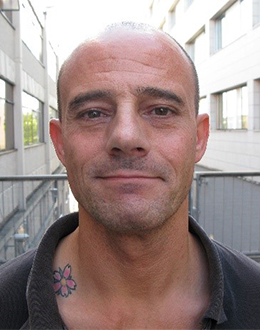THE 4TH INTERNATIONAL
SYMPOSIUM ON THERMAL-FLUID DYNAMICS
(ISTFD 2023)

THE 4TH INTERNATIONAL
SYMPOSIUM ON THERMAL-FLUID DYNAMICS
(ISTFD 2023)

Andrea Cioncolini
Guangdong Technion-Israel Institute of Technology, China.
Andrea Cioncolini (AC) completed his studies at the Polytechnic University of Milan (Italy) with a Laurea degree (equivalent to BEng plus MEng) and a PhD in Nuclear Engineering, with specialty in nuclear thermal-hydraulics. Successively, he completed a MSc in Mathematics at the University of Pavia (Italy), with specialty in computational fluid dynamics.
After graduating, AC started his career as Senior Engineer/Scientist for the nuclear vendor Westinghouse Electric Company in Pittsburgh (USA), where he worked on transient/safety analysis of water-cooled nuclear power plants and on the thermal-hydraulic design/testing of small-modular water-cooled nuclear reactor systems. Successively, he moved to the Chalmers University of Technology in Gothenburg (Sweden) and then to the EPFL-The Swiss Federal Institute of Technology in Lausanne (Switzerland), where he spent six years working as Post-Doctoral Researcher on macro-micro-scale two-phase flow modelling for demanding cooling applications (nuclear fission/fusion reactors, microelectronics systems and high-energy physics particle detectors). He joined the University of Manchester (UK) in 2013 as Lecturer in Thermal-Hydraulics, and was successively promoted to Senior Lecturer in 2018 and then to Reader in 2021. He joined the Guangdong Technion-Israel Institute of Technology in Shantou (China) in 2022 as Associate Professor.
AC’s research interests include experimental and computational thermo-fluid dynamics, convective flow boiling and multiphase flows, flow-induced vibrations and flexible fluid-structure interactions.
AC has been associated with over USD18M research funding (USD570k as personal credit) and has been PI in two research grants funded by EPSRC-Engineering and Physical Science Research Council (UK). He has authored/coauthored 1 book, 2 book chapters, and over 90 refereed papers in journals and conferences. He is Associate Editor of the Journal of Mechanical Engineering Science (Proc. IMechE) since 2020.
AC has taught Heat Transfer, Fluid Mechanics, Advanced Engineering Fluid Mechanics, Numerical Methods in Heat Transfer, and Introduction to Scientific and Engineering Calculations, and became Fellow of the Higher Education Academy (UK) in 2018. He has supervised 3 Postdocs, 6 PhDs, and over 20 MSc Theses.
Axial-Flow-Induced Vibration Studies in Light-Water-Cooled Nuclear Reactor Cores
Abstract: The structural integrity of the reactor core is crucial for safe and profitable operation of water-cooled nuclear power plants. Among the various structural degradation factors that limit the operational lifetime of the core internals, which also include flow-accelerated corrosion, embrittlement, and thermal fatigue, the fretting wear caused by flow-induced vibrations (FIVs) is of particular concern because it is recognized as one of the major causes of fuel failure in operational light-water nuclear reactors.
The flows encountered in water-cooled nuclear reactor cores are essentially axial flows, where the coolant moves axially along the core though the gaps between adjacent fuel rods. With FIV caused by axial flows (axial-FIV), the main source of excitation that triggers and sustains the structural vibration is normally turbulent buffeting: pressure fluctuations caused by turbulence in the flow can induce unsteady forces on exposed solid surfaces, which in turn can cause lateral motion and hence vibration. The tight fluid-dynamic coupling among neighboring fuel rods, which is the consequence of the closely spaced geometry of reactor cores and of the high density of the cooling water, adds further complexity to axial-FIV problems. In fact, even small amplitude vibrations can appreciably change the flow passage geometry and consequently affect the fluid forces, and the vibration of one rod can easily propagate to neighboring rods. Additional sources of excitation that further complicate axial-FIVs in nuclear reactor cores include any occurrence of localized flow separation along the fuel rods or in their proximity, nonuniformities in the flow originated from upstream disturbances or from fuel rod bowing and deformation, and vibrational noise pickup from the core support structure.
This lecture will focus on recent and ongoing experimental and computational work carried out to improve the fundamental physical understanding and prediction capability of axial-FIVs in water-cooled nuclear reactor cores. Specifically, the experiments have been carried out with simple test pieces designed to be informative of water-cooled nuclear reactor fuel rods, where both the structural vibration and the flow field have been simultaneously resolved with non-contact optical techniques. On the other hand, numerical simulations have been carried out using an FSI OpenFOAM solver with URANS turbulence modelling.